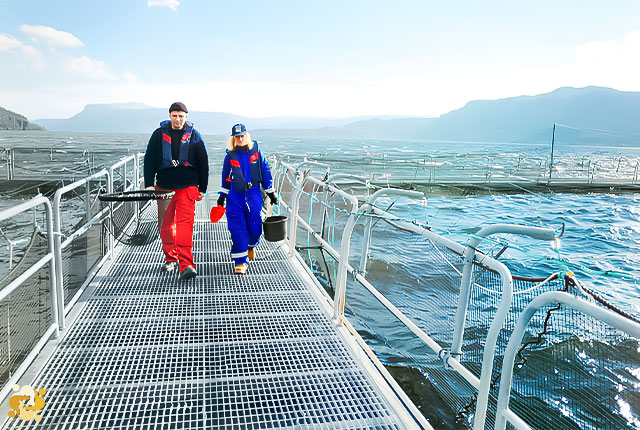
Understanding and managing aquaculture risk
2023-03-06 11:43
Risks such as fish health, fish escapes and environmental impacts are key challenges that may weaken the industry's profitability, reputation and future growth potential. The sustainable growth and development of fish farming industry requires improved understanding and management of risk within the industry.
DNV’s Marine Aquaculture Forecast 2050 shows that farmed seafood production will grow significantly over the next 10 years and double on a global basis by 2050. The amount of fish and shellfish farmed in marine waters will approach the wild catch amount.
With increasing focus on the importance of fish farming as a means of meeting rising demand for food from a growing world population, there comes a need for better risk control and barrier management.
“As Norway is one of the global leaders in aquaculture and the industry is undergoing changes as it seeks to expand, DNV has identified a need in the industry to basically lift the knowledge and competence with regard to risk and barrier management,” says Bente Pretlove, Programme Director Ocean Space, DNV Group Research and Development.
In DNV's forecast to 2050, new production technologies onshore and offshore will become competitive and capture a large part of the production. With new technologies follow new risks and according to Pretlove the industry's fundamental understanding of risk and the way in which the industry handles operational risks can be improved. With this in mind, DNV has developed a Barrier management in the aquaculture industry - Guideline that lays the foundation for a shared understanding and common language. The guideline will provide help to start using barrier management as a risk management tool.
A systematic approach to risk management
“Barrier management is a method used to ensure overall risk management. Systematic risk mapping and the implementation of barriers to prevent or stop an unwanted situation or to limit the development of such a situation, ensuring that fish can be produced safely and sustainably,” explains Inger Elise Bjørkedal, Project Manager for the guideline development.
She continues, “Barrier management will contribute to overall risk management across spheres of authority and pave the way for simplifying and improving the efficiency of auditing activities. A common language will streamline risk communication and help to increase awareness and knowledge of the elements that affect risk. Insight into the barriers' status will provide important information on the enterprise's risk exposure and thus give the authorities a better basis for risk-based inspections of the players.”
Barrier management can contribute to:
- Risk reduction through control of the barriers
- Achieving targets through better control of unwanted events that lead to losses
- Simplified interaction between the authorities and the industry
- The enabling of a more risk-based auditing regime
Higher volumes bring more complexities
In Norway, aquaculture has traditionally been practiced in the relatively sheltered environment of the country’s extensive fjord network. However, we’re now seeing a shift towards new farming sites both onshore, exposed areas and offshore in pursuit of for example higher production capacity, lowering the risk of diseases or fish escapes and getting closer to the consumers. With this shift will come new challenges.
Some of these challenges will be technological but there are regulatory hurdles to overcome as well. Torgun Gjefsen, Lead Auditor in DNV Business Assurance, highlights that the Norwegian aquaculture industry is complex and regulated by a number of different authorities with different auditing methods and focus areas. It can be challenging for fish farmers to understand what they need to do and to demonstrate control towards the different regulatory regimes.
“For the fish farmers, the benefits of barrier management go well beyond proving regulatory compliance as it improves the overall efficiency of their operations. A fish pen can contain very high numbers of fish and if diseases or parasites reach significant levels, the fish will suffer, and losses of fish and profits will occur,” says Gjefsen.
Although many aspects of fish farming can be automated and digitalisation used to control feeding and monitoring, there is obviously a need for vessels to visit the pens frequently. With this comes the risk of collision damage to pens and vessels allowing fish escapes. Weather also affects operations with winds and waves having the potential to cause damage – especially in the more exposed areas.
Gjefsen points out the benefits for the farmers saying, “This should not be treated as just another paper exercise because if the fish farmers can control their risks, they can decrease the likelihood of an unwanted event happening, and they can decrease the consequences of it if it does happen. That’s what barrier management is all about, it’s a risk control strategy. And if we can help the industry reduce fish mortality by having better control of risks, then that is a key value driver.”
Although DNV has developed its guideline on barrier management with particular reference to the Norwegian aquaculture industry, the guideline is equally applicable to both sheltered and more complex operations in exposed areas in any location around the globe. Because barrier management enables sustainable fish farming it can be used to create long term benefits for all stakeholders.
Reference:
- DNV

